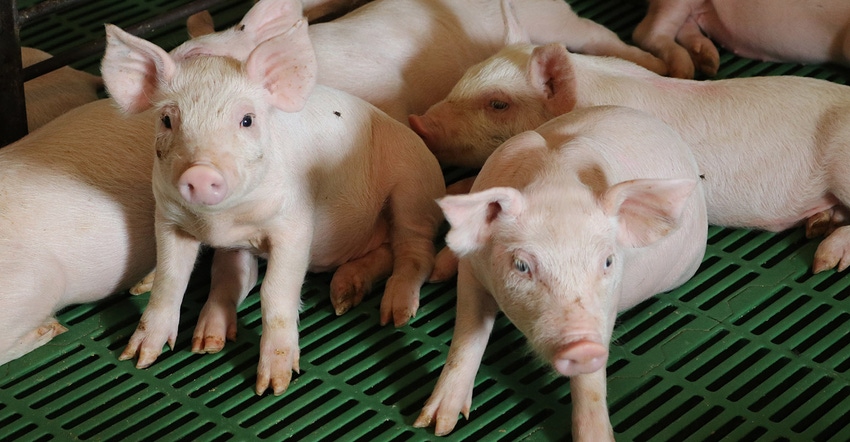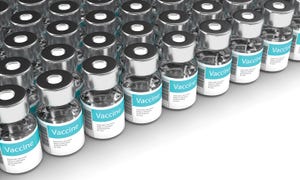Are routine diagnostics for you?
A common factor Toohill begins with is herd mortality and how a producer wants to tackle it.
November 8, 2023

By Carthage Veterinary Service
Often, diagnostics surface front of mind as clinical signs arise in barns, however, there are options for routine diagnostics based on your operations’ current health status, your goals and your budget that could help you get ahead of issues.
Carthage Veterinary Service Associate Veterinarian Elise Toohill, DVM, views two categories of purpose for routine testing. One is baseline monitoring of how well one’s current swine health program is doing. Such a program encapsulates all a producer is doing to keep their pigs healthy and set them up for success — beginning with the vaccination and acclimation of replacement gilts into the sow herd, through additional measures for the sow before being bred and prior to farrowing to prepare her to extend maximum genetic immunity to her piglets.
The second category of routine diagnostics is to gauge an operation’s biosecurity risks and protocols. A producer might elect to do baseline testing of their animals before instituting a new protocol, such as washing market trailers, and then follow up some time later with comparison tests to gauge if the investment to make that change was worthwhile. Or, if they experience a clinical outbreak of the porcine reproductive and respiratory syndrome virus in the finishing period, they may institute routine testing before that stage to understand when and how often sites are breaking and if further biosecurity protocols are warranted to prevent future breaks.
In deciding what specific testing protocols to put in place, Toohill noted, �“It varies depending on the virus or bacteria because some are easier to treat with antibiotics and vaccines, so it depends on which ones we can accurately test status and more easily prevent or control.
“As we as an industry move toward more responsible use of antibiotics, understanding the endemic bacteria that pigs have routinely is going to become more important, especially if we start to rely more on autogenous vaccines instead of antibiotics to keep our pigs healthy. Those are situations where the regular tissue diagnostics are going to be important, and valuable.”
Determining testing protocols
So how to decide on protocols for routine testing? A common factor Toohill begins with is herd mortality — after all, it’s a ready metric everyone can work from — and how a producer wants to tackle it. Do they want to reduce their mortality from 6 to 5%? From 5 to 3?
“To get to 3% wean-to-finish mortality, you really have to be fine-tuned and have a really good health program,” she pointed out.
If a producer is willing to accept higher mortality rates, they may not wish to invest in such detailed routine testing costs or for as many conditions (especially if they need to save money somewhere).
Another common factor is to ask a producer if they observe their pigs exhibiting clinical signs of illness consistently at certain stages. Are they seeing diarrhea? Lameness? Coughing? Not only does this help narrow down diseases to consider testing for, it determines when in future young pigs’ lives such testing would be most helpful.
When it comes to physically doing the testing, Toohill advised oral fluids are easy enough for a producer to collect themselves, as are fecal samples and fecal or nasal swabs. Tissue collection is more specialized, but it’s a skill teachable to producers and farm workers and does not require a vet. Blood testing takes more training, but with practice, non-vets can learn this as well if necessary.
In many cases, producers can collect processing fluids and freeze them, if they cannot institute a frequent testing program as outlined above. This storage can be valuable if clinical signs present later on for a disease such as PRRS, a case in which the virus may have been present in the herd weeks prior. Being able to test those fluids may help determine when the virus entered the herd and can help determine updated biosecurity protocols. She recommends keeping frozen samples for up to three months.
Toohill also recommends producers start with the mindset that they’re going to abide by the results of testing they settle upon; and that they be willing to adjust the testing program for need, cost and other factors they determine are most important.
“When we’re submitting diagnostic tests, we have to ask ourselves, ‘If we get X results, are we going to do something different as a result of those diagnostics?’ If you aren’t, why spend the money?” she asked. “As you and your vet develop your program, I think it’s important to build in routines to review the diagnostics and debrief on what the next steps are, to get the most value out of the investment.”
You May Also Like



